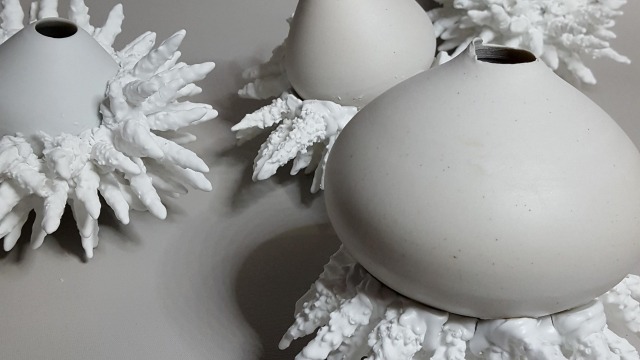EASS Margaret Munro Prize
Date & time
Reception
Location
SHARE

Margaret Munro was a great supporter of the ANU School of Art and held an abiding fondness for our school. A staunch feminist, Margaret worked for the Women’s Electoral Lobby, the National Council of Women and for Senator Susan Ryan, in her successful bid to win one of the first ACT senate seats for the ACT. Margaret was a member of the board of the Institute of the Arts in the 1990s under the then Chair of the Board Peter Karmel. Margaret was in her 60s when she enrolled in an undergraduate degree at the ANU; she went on to complete postgraduate studies in Art History. She had an enduring passion for art and attended painting classes at TAFE. In her later years she travelled to Europe to follow the Piero Della Francesca trail. Margaret Munro passed away in May 2016.
Most recently Margaret and her daughter Dr Al Munro worked to establish the Margaret Munro Prize, a $2000 prize awarded to a graduating student to develop their practice after art school. The inaugural recipients of the prize in 2015 were Mahala Hill, Cat Mueller and Sian Watson.
Mahala Hill
In my most recent body of work I have created a series of sculptural, vessel forms which reference the liminal state between life and death, destruction and beauty. The vessel has a long and deep connection to human history; invoking ideas of control, giving and taking. These forms directly refer to the environmental issue of bleached coral and the human impact on the natural world more broadly. They pose a single question – Are we taking more then we can give back?
I explore this dilemma through the materiality of my work. Each piece is produced through a laborious, reconstructive process that I have developed over the last three years. I first source organic material from the environment, which I then hand-dip in Bone China slip and subsequently reassemble upon a thrown form to create a new entity. By learning to control my medium precisely – clay composition, construction methods and the firing – I can manipulate nature to produce what I desire. Paradoxically, however, my own process requires me to ask myself - What am I taking, giving and controlling?
Cat Mueller
Currently Mueller’s practice is focused on large-scale acrylic and aerosol paintings with the recent addition of oil paint. These abstract paintings draw on natural phenomena with a hyper twist. Her paintings are a further investigation into how spray paint can be employed to create atmospheric effects and evoke the sensation of floating. Vast fields of gradating colour surround the viewer’s peripheral vision. These moody fields of colour flicker with her abstracted ‘floaters’ strips. Floaters, phenomena of the eye, are the dancing specks that appear in your field of vision. They are created when clumps form in the clear jelly inside the eyeball casting shadows. They are especially visible when staring at a large light-colored backdrop such as when gazing at the blue sky on a sunny day. Mueller is entranced by this spectacle of vision. She wants to inject this visual energy and theatrical element into the static medium of painting. She uses colour relationships, compositional structure, the contrast of soft and hard-edge paint effects and optical devices to encourage movement of the eye and aid in the creation of a kinetic visual experience to mesmerize the viewer.
Mueller has recently been experimenting with a more subdued colour palette, particularly investigating the subtleties and nuances within greys. She wants her works to evoke ‘wintery vibes’ and the reflective sensation of an atmospheric song. The echoing calm and melancholy beauty of the music of ‘Bon Iver’ epitomizes this tranquility.
Sian Watson
I frequently make work about the relationships humans have with animals, however recently I have begin to question the experiences that they share. Mass migration, displacement and urbanisation are familiarities which are impacting how we share this world and where we stand in it. I have fused the human and bird form to equalise venerability and have removed agency and ability by taking away limbs. They stand still in time considering the uncertainty which the future offers.











